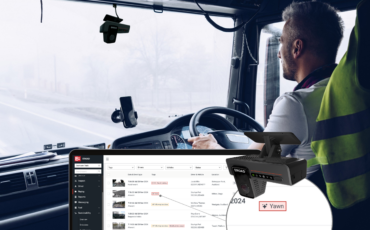What is fleet management software and how does it work?
What is fleet management software and how does it work?
Your fleet’s success and profitability is reliant on managing a myriad of different tasks. Globally, successful businesses are embracing fleet management software, or telematics, to help them manage their fleets and maintain high standard of safety, productivity, efficiency, and compliance.
Managing your fleet with telematics creates a new era of connected vehicles for your business that provides advanced data and insights to fully optimise your operations.

Telematics provides your business with complete visibility of your fleet
Your vehicles produce a huge amount of valuable data every day. Telematics captures that data and combines it together to provide powerful insights about your fleet to help you make better, more informed, data-based fleet management decisions.
Nowadays, telematics software, such as EROAD’s highly intuitive platform, does a lot more than simply monitor your fleet’s GPS location and the distance your vehicles travel. It provides sophisticated data to help you make better decisions about your fleet as well as automating a range of tasks to free up your staff to do other things.
Everything from route planning and optimisation, driver and vehicle performance, fuel usage through to safety, productivity, compliance, maintenance scheduling and cost management can now be monitored to ensure efficiencies are being achieved across all parts of your business.
In effect, it provides you with a 360-degree view of your entire operations and displays the data in such a way that helps you make critical business decisions with a continual improvement mindset. You can see trends that are impacting your bottom line or productivity including visibility at an individual level, from a driver to a single vehicle or piece of equipment, to a high-level view of your entire fleet.
For off-road fleets, EROAD also collects data from heavy equipment and other assets to monitor location, utilisation and also feeds into your maintenance schedules.
How does telematics work?
EROAD’s telematics technology comprises of four key components, which all work together to tell a story about the performance of your vehicles.
- Vehicle Connection – Installing EROAD in each of your vehicles, or on equipment, allows you to capture key data about what your vehicles are doing at any time. This includes where your vehicles are as well as speed, idling, handling and fuel use. Adding an in-cab device also enables two-way communication with your drivers to optimise your vehicles’ efficiency on the road. Drivers can receive live route updates, driver coaching or provide information and ETAs back to office staff.
- GPS monitoring – EROAD is supported by GPS vehicle tracking which monitors the location of every vehicle in your fleet with a high degree of accuracy. This allows you to see exactly where your drivers are, what routes they’ve taken and how they are performing.
- Network communications – Data collected from your vehicles is stored, then transmitted across a private end-to-end encrypted cellular network to EROAD’s central database. Satellite communication lets you track vehicles and communicate with drivers even when they’re in remote areas and outside of mobile coverage.
- Office management and analysis – EROAD’s cloud-based portal then provides you with easy-to-understand visualisations of your fleet’s activity so you can manage your compliance, health and safety, fleet maintenance and management and identify business trends or issues that can then be addressed.

All types of vehicles and assets in your fleet managed on one platform
No matter what type of business you are in – whether it’s road transport, services, civil contracting through to plumbing, building or landscaping, telematics can monitor your vehicles.
Telematics is a versatile technology that can be used in a range of different vehicles and assets, including:
- Fleet cars
- Light vans/trucks
- Single axle trailers
- Tractor units
- Heavy vehicles, such as haulage trucks
- Buses and coaches
- Specialist vehicles, such as dump trucks, tow trucks and cement trucks
- On and off-road assets such as diggers, mowers, graders and cranes












